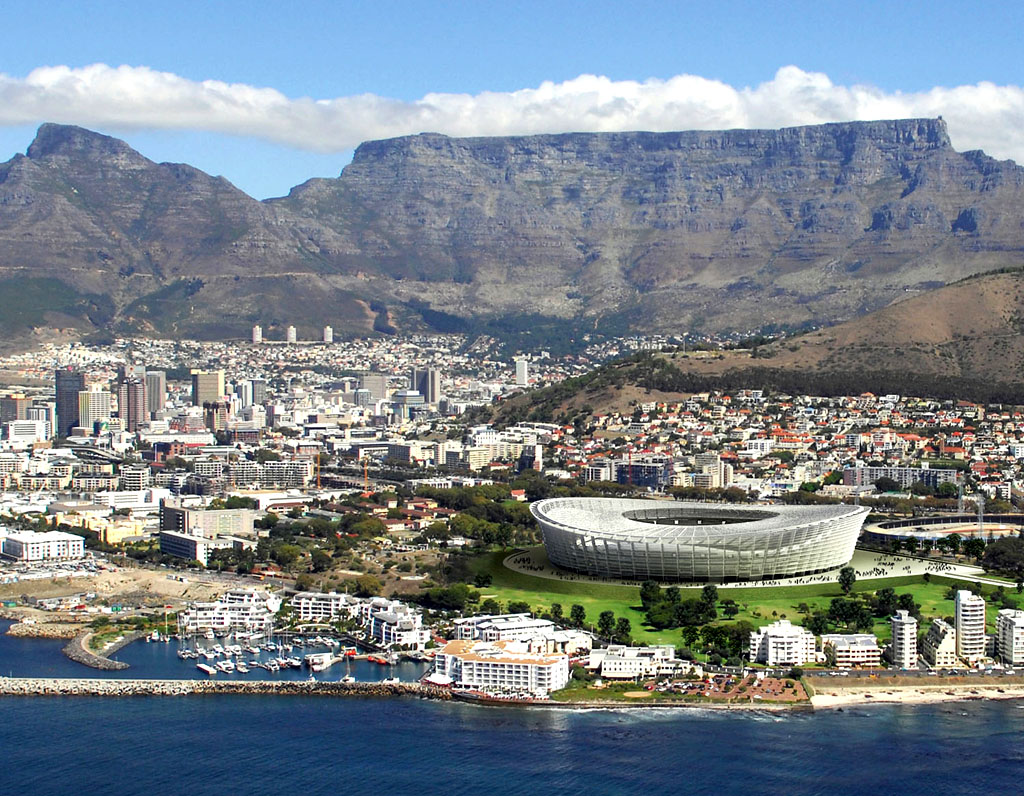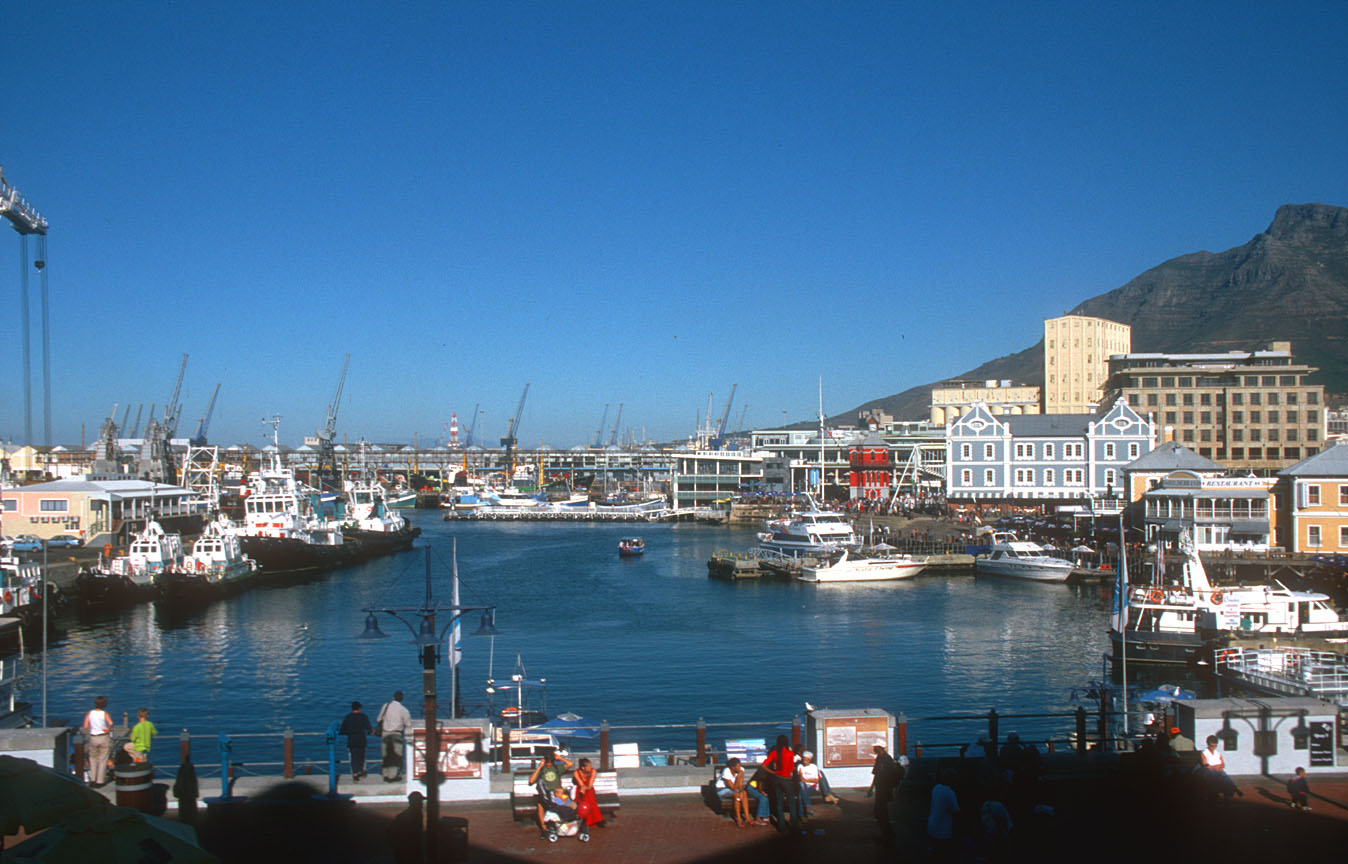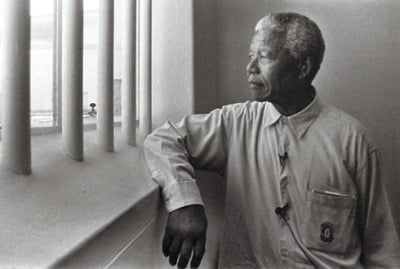Keystone State Boychoir
| return to the South Africa 2011 Tour page |

Cape Town
Cape Town (Afrikaans: Kaapstad; Xhosa: iKapa) is the second largest city in South Africa, both in population and geographic size. It is the provincial capital of the Western Cape, as well as the legislative capital of South Africa, where the National Parliament and many government offices are located. The city is famous for its harbor as well as its natural setting, including such well-known landmarks as Table Mountain and Cape Point.
Located on the shore of Table Bay, Cape Town was originally developed by the Dutch East India Company as a supply station for Dutch ships sailing to Eastern Africa, India, and the Far East. Jan van Riebeeck’s arrival on April 6, 1652 established the first permanent European settlement in South Africa. Cape Town quickly outgrew its original purpose as the first European outpost at the Castle of Good Hope, becoming the economic and cultural hub of the Cape Colony. For many years Cape Town was the largest city in South Africa. Today it is one of the most multicultural cities in the world, and has a population of over 3.5 million people.
The center of Cape Town is located at the northern end of the Cape Peninsula. Table Mountain forms a dramatic backdrop to the City Bowl, with its plateau over 3,300 ft high; it is surrounded by near-vertical cliffs, Devil’s Peak and Lion’s Head. The peninsula consists of a dramatic mountainous spine jutting southwards into the Atlantic Ocean, ending at Cape Point. There are over 70 peaks above 1,000 feet within Cape Town’s official city limits.

Table Mountain
Table Mountain is a flat-topped mountain forming a prominent landmark overlooking the city of Cape Town in South Africa, and is featured in the flag of Cape Town. It is a significant tourist attraction, with many visitors using the cable way or hiking to the top. The mountain forms part of the Table Mountain National Park.
By the late 1870’s, several of Cape Towns more prominent (and possibly less fit) citizens had suggested the introduction of a railway line to the top. Plans to implement a proposed rack railway got under way but the outbreak of the Anglo-Boer war put a halt to the plans. By 1912, with a strong desire to gain easy access to the top of Table Mountain, the Cape Town City Council commissioned an engineer to investigate the various options of transport to the top. The engineer, a Mr. H.M. Peter, suggested that a funicular railway running up from Oranjezicht through Platteklip gorge would be the most suitable option. A vote was held with the vast majority of Cape Town’s residents voting in favor.

Cape Town Harbor


Robben Island & Nelson Mandela
Robben Island is an island that lies directly off the coast of Capetown and it’s where Nelson Mandela spent many of his years in prison.
Nelson Mandela was born in a small South African village to a local chief and his third wife. He was the first person in his family to receive a western education, and was inspired to study law after witnessing the democracy of African tribal governance at an early age. Mandela and his partner, Oliver Tambo, open the first black law practice in Johannesburg in 1952, defending black South Africans against the government’s increasingly unfair treatment, and a key figure of the African National Congress, a political party that sought to unite all Africans and regain their rights and freedom. He participated in boycotts, organized protests, mobilized his people and in turn was labeled an enemy of the state: accused of treason, banned from political involvement, disbarred, and sentenced to life in prison. Mandela’s incarceration brought international attention to the racial injustices of South Africa’s apartheid government sparking the rally cry “Free Nelson Mandela” worldwide.
Mandela served 27 years in prison, spending many of those years on Robben Island before his release in 1990 at the age of 72. Following his release from prison on 11 February 1990, Mandela led his party in the negotiations that led to multi-racial democracy in 1994. As president from 1994 to 1999, he frequently gave priority to reconciliation. Although he retired from political life in 1999, Mandela continues to lend his voice towards issues that affect his country and the world at large, such as the AIDS epidemic, poverty, and human rights. He was also instrumental in securing South Africa as the host of the 2010 Soccer World Cup.
In South Africa, Mandela is often known as Madiba, his Xhosa clan name. Mandela has received more than 250 awards over four decades, including the 1993 Nobel Peace Prize as well as the Philadelphia Liberty Medal in the same year.
Nelson Mandela is a living hero to not only South Africans, but to people everywhere.
Cape of Good Hope
The Cape of Good Hope is a promontory at the southern end of Cape Peninsula, Western Cape province, South Africa. It was first sighted by the Portuguese navigator Bartolomeu Dias in 1488 on his return voyage to Portugal after discovering the southern limits of the African continent. One historical account says that Dias named it Cape of Storms and that John II of Portugal renamed it Cape of Good Hope (because its discovery was a good omen that India could be reached by sea from Europe); other sources attribute its present name to Dias himself. Known for the stormy weather and rough seas encountered there, the cape is situated at the convergence of the warm Mozambique-Agulhas current from the Indian Ocean and the cool Benguela current from Antarctic waters.
http://www.capestay.co.za/view-regions.asp?RegionID=11
http://en.wikipedia.org/wiki/Cape_Town
http://en.wikipedia.org/wiki/Nelson_Mandela